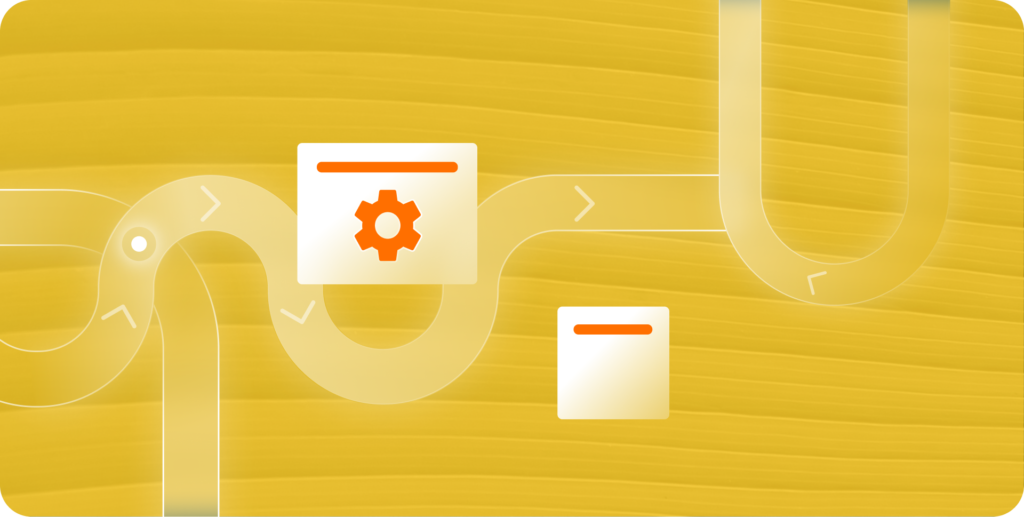To streamline development, increase efficiency, and improve reliability, developers should take to heart these fundamental GitOps principles
Git is one of today’s most popular development tools, so it’s no surprise that GitOps has taken root as an effGitOps is a strong strategy for DevOps teams. It uses Git’s version control to simplify app deployment and management. GitOps puts Git at the center of all changes. This helps teams automate tasks, collaborate more effectively, and achieve consistent, scalable results. However, teams must follow best practices to get the most out of GitOps.
This article shares five GitOps best practices that all developers should know. These best practices improve efficiency, avoid errors, and deliver safe and stable deployments. Whether you’re new to GitOps or want to enhance your setup, these tips will help simplify workflows. You’ll deliver apps quicker and more reliably.
Dig deeper into GitOps’ best practices, tools, and more. What is GitOps? A Guide for Developers.
Key Takeaways
- Separate code and configuration repositories for better manageability.
- Adopt a trunk-based development model to streamline changes.
- Implement strong security and policy management for safe deployments.
Understanding Foundational GitOps Principles
GitOps uses Git to control versions and make app development and operations more straightforward. GitOps focuses on security, observability, and teamwork. It keeps data safe and helps teams stay aligned with a clear record of all changes and updates. These are the fundamental GitOps principles all developers should understand:
- Single Source of Truth: Git is the central hub for all code and configuration files. Every change is tracked and can be reviewed. This clears up the confusion. It shows a clear update history, makes fixing issues easier, and lets teams undo changes if needed.
- Declarative Infrastructure: GitOps defines the ideal state for your infrastructure and applications. By using declarative configurations, teams ensure every deployment matches the desired state. This minimizes errors and keeps everything consistent.
- Automated CI/CD Pipelines: GitOps is automation-focused. Software building, testing, and deployment are all done automatically in CI/CD pipelines. This is what drives continuous delivery. It reduces mistakes and provides smooth and consistent application changes.
As Dinesh, an Amazon frontend engineer, states: “Cloud platforms provide on-demand scalability and automation that reduce deployment times dramatically, but teams must optimize configurations and security policies to fully realize these benefits.”
These foundational principles enable automation and seamless workflows, making GitOps an appealing approach for modern development teams. Find out how DuploCloud can help your team deploy cloud applications 10 times faster. Read our free whitepaper:

5 GitOps Best Practices Devs Need To Know
To get the most by adopting GitOps, teams should follow best practices that match its principles. These practices help streamline workflows, improve manageability, and ensure secure and efficient deployments.
1: Separate code and configuration repositories
Keeping your code and configurations in different repositories has several essential benefits. You can make configuration changes without forcing a complete application rebuild. This only happens if the application code also changes and needs a rebuild.
Keeping separate repositories acknowledges that different teams in many organizations manage code and configuration files at various life cycle stages. Waiting for one change to be approved can slow things down.
Also, if teams don’t agree on a merger, development can be delayed. This can also disrupt automated CI/CD pipelines.
2: Use directories instead of branches
Tracking environmental branches is difficult, and promoting changes across branched environments is complex. That’s because changes to one environment shouldn’t always be merged into every other branch. As branches grow, changing one at a time—known as cherry-picking—takes a lot of manual work.
This process is slow and prone to errors. As an application grows, using a manual approach can lead to a rapid increase in code drift. This drift can soon become unmanageable. Using development directories instead of branches keeps the settings for each environment separate and safe.
3: Take a trunk-based approach to development
To follow GitOps principles, use branches in a trunk-based development model. The trunk-based model simplifies the process. It creates branches, merges them, and then deletes them.
This way, it skips the need for many branches that need their setup and care. A single branch serves as the trunk in question, and development plays out on a branch from that trunk. When all approvals are received for the pull request, the branch merges into the trunk and gets deleted.
4: Build security rules and policy management protocols
Branches are popular with developers because they spread out the risk. If something goes wrong, it will only affect that one branch, not the whole environment. A GitOps approach and trunk-based development mean there is mostly one branch for the entire application. Managing security and policies is key to GitOp’s best practices.
Set up basic branch protection rules. These rules help keep the trunk secure. They stop unintentional or unapproved changes from reaching the public environment. Use security basics like regular code reviews and vulnerability scanning. This helps you find issues before they turn into breaches.
Here is a table representation of the security rules and policy management protocols
| Security Measure | Benefit |
| Branch Protection Rules | Prevent unauthorized merges |
| Role-Based Access Control (RBAC) | Restrict access to critical areas |
| Automated Security Scans | Identify vulnerabilities early |
As Dinesh highlights: “Organizations need to be aware that cloud migration isn’t just about reducing hardware costs—it also includes data transfer, application re-architecting, and training expenses, which can add up quickly.” A well-structured security framework helps prevent unexpected costs and ensures compliance with security best practices.
5: Distribute approvals across all impacted teams
In a trunk-based development model, mistakes are more likely to occur in one main branch. It’s important to let any team or department affected by a change approve it. Some GitOps teams set a minimum number of approvals for each proposed merge.
However, all affected teams should have the chance to review requests. Next, take it a step further. Use role-based access control (RBAC) to assign specific users to approve changes.
Benefits of GitOps
GitOps is a modern way to handle software development and operations. It uses Git as the primary tool to manage infrastructure and app deployments. Here are its key benefits:
- Automation and Optimization: GitOps automates deployments and minimizes person-hours. This reduces processes, minimizes mistakes, and delivers consistent results.
- Improved Traceability: All changes are tracked in Git. This lets you easily track who changed what, for what, and when. This increases accountability and enables compliance.
- Better Security: GitOps enforces strict access controls. It also uses code reviews and vulnerability testing. This prevents unauthorized updates and ensures deployments are secure.
- Quick Rollbacks: If something goes wrong, you can roll back to a stable version you know in Git in a hurry. This minimizes downtime and ensures systems stay stable.
- Better Collaboration: GitOps has a transparent history of all changes. This facilitates seamless collaboration between operations, developers, and other stakeholders without miscommunication.
- GitOps keeps all environments in sync, whether in development, testing, or production. This reduces errors and deployment failure.
- Cost Savings: GitOps is cost-effective due to automation and error elimination. More time can be saved for constructing new features and not debugging, thus improving productivity.
GitOps speeds deployments. It ensures they are safer and more reliable and saves time and cost.
Introduce GitOps To Your CI/CD Pipelines with DuploCloud
GitOps is a substantial part of any DevOps strategy. It helps optimize development pipelines. Also, it improves the efficiency and reliability of deployments. Link the tools your team uses to improve automation, traceability, security, and teamwork.
DuploCloud helps your team follow GitOps best practices. It connects your Git repository to a strong CI/CD automation pipeline. DuploCloud works well with all the top Git and GitOps tools. This makes it easy to start using right away. Plus, it has industry-leading security certifications. And, with excellent support teams, you have all you need to succeed from day one.
Are you ready to see how DuploCloud’s low-code/no-code DevOps platform speeds up infrastructure provisioning by ten times? It also helps modern development teams use GitOps principles effectively. Contact us today for a free demo.
FAQs
How does GitOps provide consistency across environments?
GitOps uses a single source of truth in Git for configurations and code. This ensures consistency in all environments: testing, development, and production.
GitOps reduces errors since the desired state is defined in Git. GitOps automates deployments and ensures consistency in all environments. This reduces failure in deployments and gives systems stability.
Why is a trunk-based development model important in GitOps?
A trunk-based model streamlines workflows. There is one trunk, or branch, for all changes. Fix or feature branches are short-lived and developed by developers.
They are merged into the trunk upon approval. This streamlines handling multiple branches. It eliminates code drift and keeps the main branch in sync with the latest stable version of the application. It speeds up development and collaboration.
What tools do you need for GitOps implementation?
Key tools for GitOps are Git repositories, such as GitHub or GitLab. CI/CD tools such as Jenkins or ArgoCD are essential as well. Tools such as Terraform or gitops Kubernetes for infra-as-code are essential.
Such tools facilitate automation for workflows, version control, and continuous, safe deployment. Tools like DuploCloud integrate all such tools seamlessly. This allows teams to leverage GitOps best practices.
Can GitOps be applied to small teams or startups?
Yes, GitOps is scalable and can be utilized with any team size. GitOps is simple for small startups or small-sized teams. It automates and provides consistent deployments.
DuploCloud allows teams to adopt GitOps principles quickly. It is not resource-intensive; therefore, small teams can directly attain faster and more consistent results.



